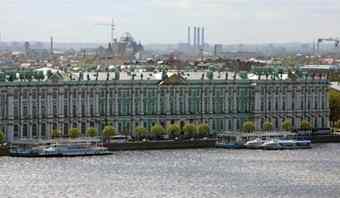The network of branches abroad has proved to be a very successful project of the famous Hermitage in St. Petersburg. About a million people have visited one of these branches in the capital of Holland, Amsterdam, for the year of its existence.
 Amstelhof is the name of the Amsterdam branch and it is one of the four branches of the Hermitage abroad. The three others are in the UK, Italy and the USA. Amstelhof immediately took the pride of place in the cultural life of the Dutch capital.
Amstelhof is the name of the Amsterdam branch and it is one of the four branches of the Hermitage abroad. The three others are in the UK, Italy and the USA. Amstelhof immediately took the pride of place in the cultural life of the Dutch capital.
The very first exhibition dedicated to the Russian Imperial Court was visited by 750,000 people in six months. No local museum has ever seen so many visitors. Tourists from all over Europe went to Amstelhof to see the art exhibition “From Matisse to Malevich”.
The Hermitage hopes that the new exhibition “Alexander the Great and March to the East”, to be opened in September, will enjoy the same popularity.
“Its main topic is Alexander’s Oriental campaign which favoured a rapid expansion of Hellenistic culture in the world,” said Anna Trofimova from the Hermitage museum who is the curator of the forthcoming exhibition.
"The main character is, certainly, very attractive. Not only because we all remember the recent Oliver Stone’s film but also because the public needs heroes – ideal, good-looking and perfect people who perform superhuman deeds and dream of great things.
The idea of the exhibition is to show how Hellenism, which is Greek culture, art, language and religion, expanded on a vast territory, as far as India, and was assimilated by the Oriental countries that had had an absolutely different culture for millenniums before.
Only such a museum as the Hermitage is capable of showing the history of civilization on this vast territory from the 5th century BC to the 19th century AD. I believe that no other museum in the world could arrange a similar exhibition using its own collections only. We are very proud of this.”
"The exhibition is a kind of legend about Alexander the Great in art. The legend is complemented by archaeological finds from Egypt, Iran, Syria and Central Asia kept in the Hermitage. “Only unique exhibits will be displayed at the exhibition," says Anna Trofimova.
"One of them is the famous Gonzaga cameo, one of the largest cameos in the world, with portraits of the Egyptian kings Ptolemeus and Arsinous. I think," Anna Trofimova says in conclusion. "That this kind of exhibition proves the unity of the world and its cultural community. Exhibitions are very important nowadays when life is so troubled and complicated. As for the Hermitage, we are happy to demonstrate our ideas, out artefacts and our hard work because each exhibit is the fruit of work done by the Hermitage people – curators, historians and archaeologists."
Besides the foreign branches, the St. Petersburg Hermitage is opening its extensions in many Russian cities. The Director of the Hermitage Mikhail Piotrovsky explains this policy by the fact that “today museums do not replenish their collections by items from other countries, and in these circumstances it is necessary to think about creating a united cultural space”.
Source: The Voice Of Russia [August 23, 2010]